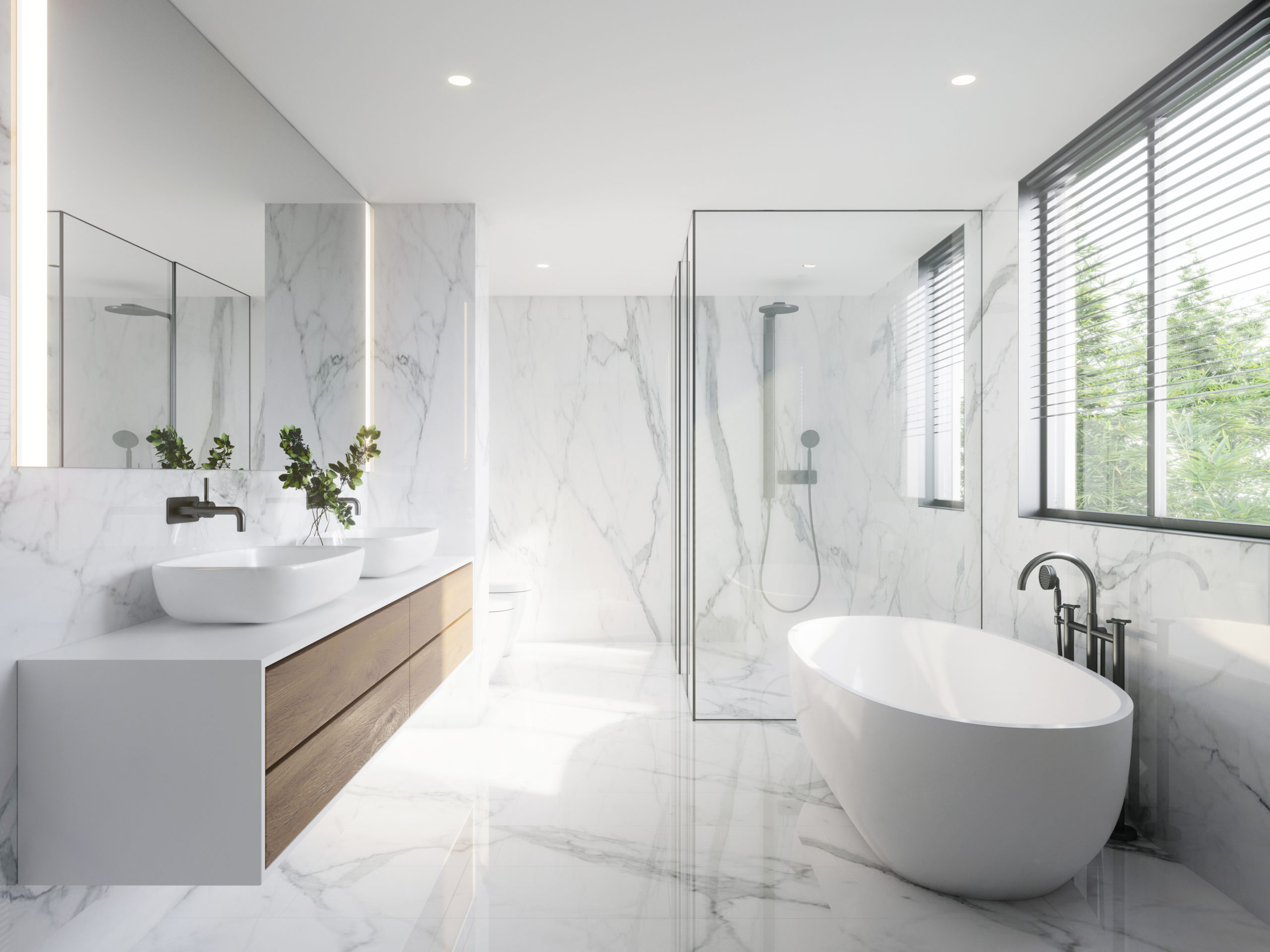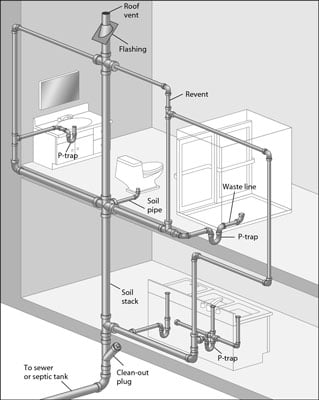This great article below in relation to What Are Plumbing Vents and Why Are They Important? is totally attention-grabbing. Read on and make your own personal conclusions.

Correct ventilation in plumbing systems is commonly ignored, yet it is essential for keeping the capability and safety of your home's plumbing. Ventilation helps control air pressure, protect against the accumulation of damaging gases, and ensure the reliable elimination of waste. In this overview, we will certainly explore the relevance of proper pipes air flow, how it works, and the benefits it gives your plumbing system.
Exactly How Air Flow Works in Pipes Solutions
Atmospheric Pressure Law
Proper air flow keeps balanced air pressure within the plumbing system. When water moves via pipes, it displaces air. Without adequate air flow, this displacement can develop adverse pressure, causing slow drains or siphoning of water from catches, which can trigger unpleasant odors to leak into the home.
Avoiding Sewer Gas Buildup
One of the most essential features of pipes vents is to prevent sewage system gases, such as methane and hydrogen sulfide, from collecting within the home. These gases can posture serious wellness dangers and are highly flammable. Vent pipes allow these gases to get away securely outdoors.
Aiding in Waste Removal
Ventilation aids in the reliable elimination of wastewater by avoiding airlocks in the drain system. When air can flow openly through the vents, it enables water and waste to stream smoothly via the pipes, decreasing the threat of clogs and backups.
Advantages of Appropriate Air Flow
Improved System Efficiency
Appropriately aerated plumbing systems operate a lot more successfully, with fewer blockages, faster draining, and less pressure on the pipelines. This effectiveness extends the life expectancy of the pipes system.
Improved Air Quality
By protecting against drain gases from entering your home, proper air flow adds to better indoor air quality, making your living atmosphere healthier and a lot more comfy.
Preventing Water Damage
Adequate ventilation assists protect against water from being siphoned out of traps, which can cause sewer gases going into the home and causing water damages over time.
Steps to Make Certain Correct Ventilation
Consulting Plumbing Codes
Constantly speak with regional pipes codes when creating or customizing your plumbing system. These codes provide the required guidelines for appropriate airing vent and ensure your system fulfills safety and security standards.
Regular Examination and Upkeep
Regular examinations can help identify prospective ventilation issues prior to they end up being significant troubles. Maintenance tasks, such as cleaning up air vent pipes and checking for blockages, are crucial for maintaining the system in good working order.
Specialist Installment
For new installations or major alterations, it's important to work with a professional plumbing. They have the know-how to ensure the air flow system is correctly designed and mounted according to code.
Comprehending Air Flow in Pipes
Air flow in pipes describes the network of pipelines that allow air to move through the drain system. These vents offer multiple functions, consisting of managing air pressure within the pipelines, stopping sewer gases from entering the home, and aiding in the smooth flow of wastewater.
Types of Plumbing Vents
Key Stack Vent
The main stack air vent, likewise called the vent stack, is the key vent in a plumbing system. It prolongs from the major drain line up with the roofing, permitting gases to get away and fresh air to get in the system.
Branch Vent
Branch vents link to the main pile vent and offer individual fixtures, such as sinks, commodes, and showers. These vents make sure that each fixture has ample ventilation to operate properly.
Air Admission Valve (AAV).
An Air Admission Shutoff (AAV) is a one-way shutoff that allows air to go into the pipes system without the requirement for a conventional air vent pipeline extending with the roofing. AAVs are generally utilized in remodellings or areas where setting up a standard air vent is not practical.
Indicators of Poor Air Flow in Plumbing.
Slow Draining Fixtures.
If your sinks, tubs, or commodes are draining gradually, maybe an indicator of inadequate ventilation. Inadequate air circulation can produce a vacuum cleaner effect, making it hard for water to drain effectively.
Gurgling Seems.
Gurgling audios coming from drains are commonly an outcome of air being drawn via water traps because of unfavorable pressure in the pipelines. This is a clear sign of not enough air flow.
Undesirable Smells.
Sewage system odors inside your home are a red flag that your plumbing system is not correctly aerated. This can indicate that sewer gases are not being appropriately aired vent outside, resulting in possibly harmful conditions.
Typical Air Flow Mistakes.
Inadequate Vent Sizing.
Making use of small vent pipelines can lead to inadequate air flow and stress imbalances in the system. It's essential to use vents that meet the details needs of your plumbing system.
Improper Vent Positioning.
Placing vents also far from the fixtures they offer can minimize their performance. Appropriate placement makes sure that air can stream easily and efficiently through the system.
Disregarding Code Demands.
Building regulations give specific guidelines for plumbing ventilation. Overlooking these codes can lead to a system that stops working to operate correctly and may bring about pricey repair work or health hazards.
Final thought.
Appropriate ventilation is an essential element of any type of pipes system, making certain that it operates successfully and securely. By understanding the relevance of air flow, recognizing the indicators of inadequate ventilation, and taking steps to maintain your system, you can protect against costly problems and shield your home's air quality.
4 Things You Should Know About Your Plumbing Vents
What Plumbing Vents Are
Also called a vent stack, a plumbing vent is a vertical pipe attached to your drain line that runs through your roof. The plumbing vent pipe, or plumbing air vent, removes gas and odors from your plumbing system and allows fresh air to enter the pipes, helping the water to flow out of the drain pipes.
What Plumbing Vents Do
Plumbing vents have two basic functions. One of which is to allow unpleasant smelling wastewater and sewer gasses to escape your plumbing system instead of entering your home. Plumbing vent pipes are typically located on roofs, away from windows, to ensure the fumes exit the home completely.
The other function of the plumbing vent is to move fresh air into your plumbing system. This helps move water through every plumbing fixture in your house, like toilets and sink drains. Think of the way in which you need to let a little air into the bottle as you pour soda in order to make the drink flow smoothly.
Different Types of Plumbing Vents
- True vent: This is the most common vent option. In simplest terms, a true vent is a vertical pipe attached to your drain line that exits through the roof. They often function as the main vent that other fixtures can connect to.
- Re-vent pipe or auxiliary vent: Attached to the drain line near specific plumbing fixtures, re-vent pipes run up and over to connect to the main vent.
- Common vent: Two plumbing fixtures installed on opposite sides of a wall are typically tied into the vent stack using something known as a sanitary cross.
- Wet vent: This venting option operates as a drain pipe and a vent at the same time. Wet vent drainage systems drain water from one fixture while venting the air from another. Although they’ve been used for over 100 years, wet vent systems have only recently been added to the plumbing code in many areas. If you’re planning on installing one in a bathroom remodel, make sure you check your local code prior to construction.
- Loop vent: For free-standing fixtures like kitchen island sinks, loop vents are ideal. These vent pipes run under the floor, rise from the P-trap, and create a loop inside the cabinet sink.
- Air admittance valve: An AAV is a one-way mechanical valve typically installed at the site of the plumbing fixture. AAVs allow venting to occur without having to tie into a larger venting system. They’re ideal for venting fixtures where you aren’t able to easily connect to an existing vent system.
Common Plumbing Vent Issues
Although vent pipes typically don’t have water flowing through them, they’re still subject to many typical plumbing issues. For example, clogs are one of the most common problems associated with sewer vent pipes. If your vent pipe gets clogged, all of your plumbing fixtures tied into the vent stack will be affected.
A sink with a slow drain that bubbles and gurgles or a strong sewage smell around your toilet are both indicators that your toilet vent pipe is clogged. Because most vent pipes exit through the roof, old leaves, twigs or even a bird’s nest could be clogging the pipe.
Clogs in your vent pipe system cause a buildup of negative pressure, meaning that water won’t be able to flow out of your home very well. It’s similar to putting your finger over the opening of a straw to trap water inside. When you remove your finger, the water is able to flow out of the straw.
If you suspect you have any blockage in your vent, make sure you have a professional come examine the situation. Left unchecked, a blocked air vent can lead to other costly repairs, like leaks and sediment buildup.
Under Pressure
Pipe vents are essential aspects of a home’s plumbing system. Owning a home means learning about all sorts of things you never put much thought into before. But by understanding as much as you can about the important systems of your home, you can keep those budgets intact and those anxiety levels low.
https://www.homeserve.com/en-us/blog/home-improvement/plumbing-vents/

As a person who reads on What Are Plumbing Vents and Why Are They Important?, I think sharing that piece of content was really helpful. Don't hesitate to take the opportunity to share this blog if you appreciated it. Thanks a lot for going through it.
Click
Comments on “Adequate Ventilation in Plumbing Systems: Why It Is Essential”